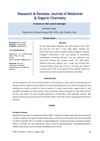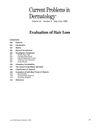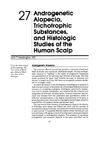 1 citations
,
July 2022 in “Journal of Cosmetic Dermatology”
1 citations
,
July 2022 in “Journal of Cosmetic Dermatology” Inflammatory complications are rare after hair transplants but can happen months later, and checking for skin conditions before surgery is important.
June 2022 in “Dermatologic Therapy” Oral minoxidil and growth factors improved hair density and thickness in a girl with hereditary hair loss.
 November 2019 in “Harper's Textbook of Pediatric Dermatology”
November 2019 in “Harper's Textbook of Pediatric Dermatology” Understanding normal hair growth and loss in children is key to diagnosing and treating hair disorders.

The article concludes that understanding the causes of hair loss and using continuous treatments like minoxidil and finasteride can help manage it, despite potential side effects.
Trichotillometry can measure hair plucking force, aiding alopecia treatment evaluation.
June 2001 in “European Journal of Dermatology” A 54-year-old woman experienced progressive hair loss starting in adolescence, leading to sparse scalp hair and almost no eyebrows or eyelashes.
 21 citations
,
May 1996 in “Current problems in dermatology”
21 citations
,
May 1996 in “Current problems in dermatology” Detailed patient history and physical exams are crucial for diagnosing hair loss.
189 citations
,
May 1991 in “Medical Entomology and Zoology” 17 citations
,
January 1991 in “Acta Dermato Venereologica” A Danish family spanning four generations exhibited familial hypotrichosis of the scalp, characterized by gradual hair loss beginning between ages 6 and 17, leading to almost total scalp alopecia by ages 14 to 21. Out of 22 family members, 9 were affected. The condition showed no associated ectodermal defects and was identified as non-scarring alopecia with features similar to androgenetic alopecia. The inheritance pattern was consistent with autosomal dominant transmission.
 5 citations
,
October 1988 in “Clinics in Dermatology”
5 citations
,
October 1988 in “Clinics in Dermatology” Minoxidil promotes hair growth but exact mechanism is unknown.




